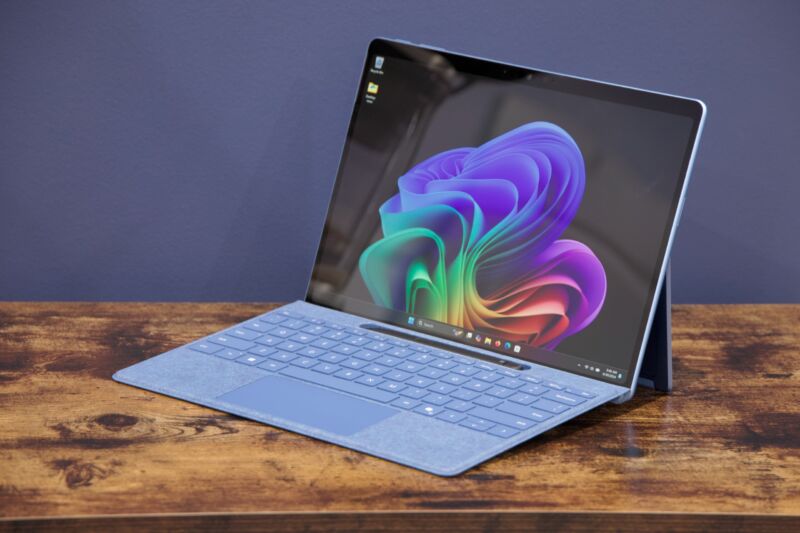
Andrew Cunningham
Microsoft has been trying to make Windows-on-Arm processors a thing for so long that, at some point, I think I just started assuming it was never going to happen.
The first attempt was Windows RT, which managed to run pretty well on the weird Arm hardware available at the time, but came with a confusing new interface and couldn’t run any apps designed for regular Windows-based PCs. Intel and AMD. Windows RT failed, in part because a version of Windows that couldn’t run Windows apps and didn’t use a familiar Windows interface was ignoring two big reasons why people continue to use Windows.
Windows-on-Arm returned in the late 2010s, with better performance and a translation layer for Intel’s 32-bit applications in tow. This version of Windows, mostly limited to the quirky Surface hardware and a handful of models barely promoted by the big PC OEMs, has crept along quietly for years. It has improved slowly and gradually, as have the Qualcomm processors that have powered these devices.
That brings us to this year’s flagship Microsoft Surface devices: the 7th edition Surface Laptop and the 11th edition Surface Pro.
These devices are Microsoft’s first mainstream Surface devices to use Arm chips, while previous efforts have been side projects or non-preferred variants. Both hardware and software have improved enough that I finally feel I can recommend a Windows-on-Arm device to a lot of people without having to preface it with a bunch of exceptions.
Unfortunately, Microsoft has chosen to launch this impressive and capable Armi hardware and enhanced software along with a number of AI-generating features, including the Recall screen recorder, a feature that became so radioactively unpopular that Microsoft quickly forced him to delay to address key security. problems (and perception problems arising from security problems).
The remaining AI features are so redundant that I’ll ignore them in this review and cover them later when we take a closer look at the 24H2 update of Windows 11. This is a good enough device that it’s not need buzzy AI features to sell it. Windows on Arm continues to struggle, but the new Surface Pro and Surface Laptop — and many of the other Arm Copilot+-based PCs that have launched in the past couple of weeks — are far better than Arm PCs that were even a year or two ago.
Known from abroad

Andrew Cunningham
When Apple released the first pair of Apple Silicon Macs in late 2020, the only thing the company did on purpose NO the difference was the exterior design. Apple didn’t comment much on it at the time, but the implicit message was that these were just Macs, they looked just like other Macs, and there was nothing to worry about.
Microsoft’s new flagship Surface hardware, powered exclusively by Arm-based chips for the first time instead of a mix of Arm and Intel/AMD, takes a similar approach: revamped from the inside out. These are very similar to the latest (and current) Surface Pro and Intel-powered Surface Laptop models, and in the case of the Surface Pro, they actually look identical.
Both PCs still include some of the defining elements of the Surface hardware models. Both have screens with 3:2 aspect ratios that make them taller than most typical laptop screens, which still use 16:10 or 16:9 aspect ratios. These displays also support touch input via fingers or the Surface Pen, and they still use gently rounded corners (which Windows doesn’t officially recognize in software, so the corners of your windows will be cut off, not that it’s ever been a problem for me).